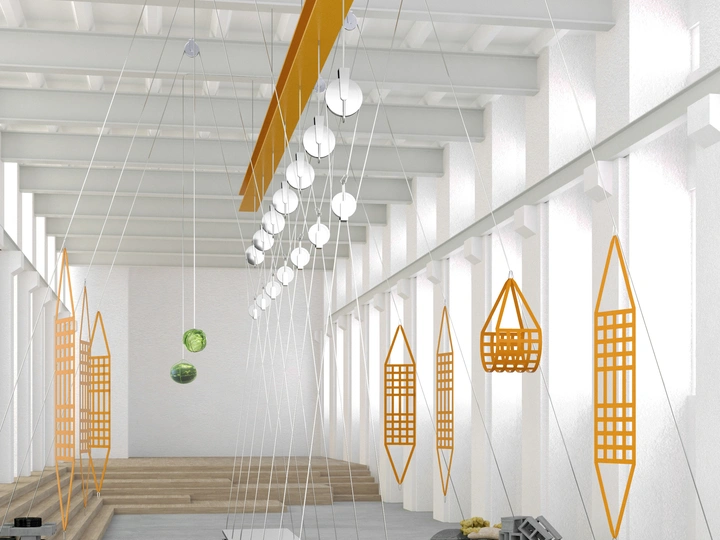La Chimera: Architectures of Interdependence

Martina Genovesi
Astrid Lykke Nielsen
Juliane Seehawer
Every Island is a Brussels-based design and research collective founded in 2021. We work at the intersection of architecture, scenography, and performance, with a focus on ephemeral structures, spatial storytelling, and collective use. Our practice is rooted in a belief that space is not neutral, and that architecture can be a tool to question systems of power, presence, and participation.
With a shared background in architecture, we explore how spatial design can act as a rehearsal ground for transitions of meaning, of roles, of physical and social relations. We are drawn to ambiguity as a design strategy, developing spaces that are open to multiple uses and interpretations, often existing only temporarily or in states of transformation.
We are interested in how people inhabit space together, especially under precarious or temporary conditions. Discomfort, interdependence, and improvisation are recurring themes in our work. We often explore how bodily engagement, slow construction, or shared maintenance can open up new forms of care and co-existence.
Materiality is central to our process. We work with reused components and low-tech construction methods, engaging with the layered memory of materials and the possibilities of improvisation. Our interest lies not in producing fixed forms, but in setting up responsive systems that invite participation, friction, and attentiveness.
We operate as a horizontal structure, sharing authorship throughout concept development, design, and realisation. Our work has been presented in both institutional and performative contexts, including Mudam Luxembourg (2022), Santarcangelo dei Teatri (2022), VIERNULVIER (2022), BOZAR (2023), and the Luxembourg Pavilion at the 60th Venice Biennale (2024).
La Chimera is a spatial mechanism that explores interdependence as both concept and condition. It invites reflection on how we inhabit space together—recognising that we are interconnected, but not equal. Through a system of pulleys, weights, and harnesses, it stages architecture as a field of forces, held in place only by the commitment and presence of its users.
The installation is composed of a suspended platform and cargo nets that shift into different configurations depending on how weight is distributed. It becomes a table when users balance their own bodies in relation to others. It becomes a tent when lifted into tension. It becomes a cocoon when anchored into softness. Each transformation requires collaborative adjustment, and each role—whether holding, using, or observing—has consequences for the whole.
Drawing from Donna Haraway’s idea of sympoiesis (making-with) and Bruno Latour’s theory of attanti (actors, both human and non-human), La Chimera is understood not as an object but as a relational structure. Materials, bodies, cables, even gravity itself are treated as agents in a precarious and co-authored composition. Space emerges not from form, but from cooperation.
Constructed using low-tech techniques and repurposed materials, La Chimera resists permanence and fixity. Its aesthetic is fragmentary and exposed. It is not designed to offer comfort or stability, but to provoke attention, imbalance, and care.
We imagine La Chimera as an open invitation: a rehearsal of interdependence. It is a tool for thinking through vulnerability, shared agency, and the physical negotiations required to shape space together.